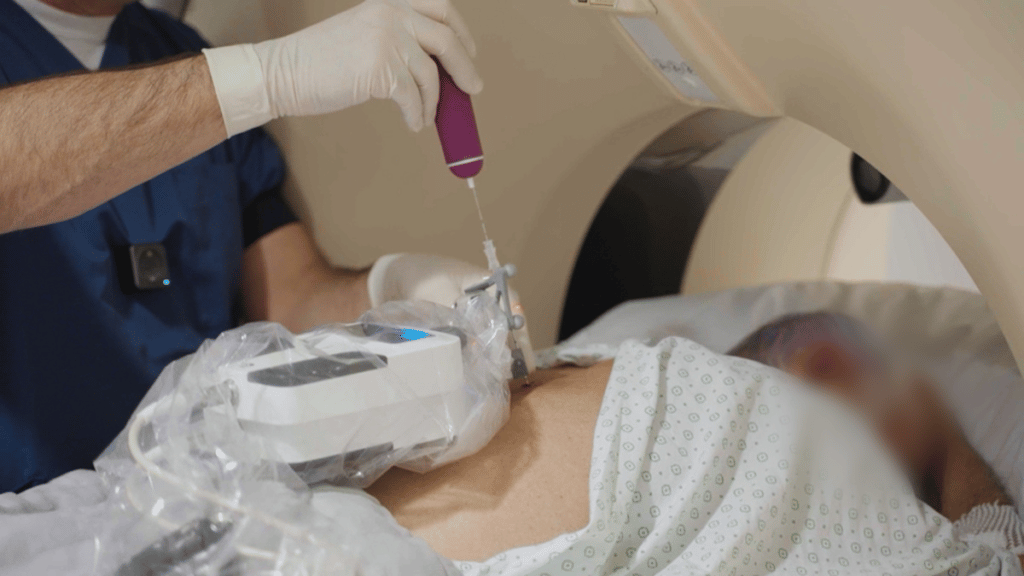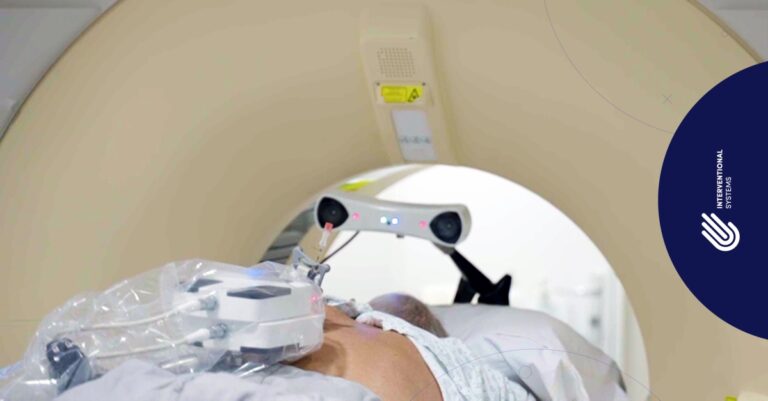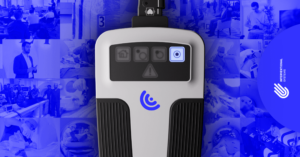The latest version of the miniature robotic system was first used in a series of CT-guided percutaneous biopsies of the lung, spleen, and bone.
Interventional Systems is thrilled to announce the successful deployment of the planning and navigation station of its medical robotics platform for percutaneous procedures, Micromate™, at the St. Antonius Ziekenhuis in the Netherlands.
The clinical team, led by interventional radiologist Dr. Marco van Strijen, completed 7 biopsies in the same week they first used the robotic platform in CT-guided interventions.
After achieving exceptional results in robotic-assisted procedures in the angiography suite, Dr. Marco translated his learnings into creating a purely interventional workflow for the CT room. The transition was short, taking only one case to achieve a net robot usage time equivalent to that of the angio suite. More importantly, because the Micromate navigation system is built around robotic usage, this same workflow can be adopted in every IR room.
Supporting complex cases from the get-go
Micromate™ supported the planning, navigation, and guidance of the biopsy needle to target lung, spleen, and pelvic bone lesions.
The system reduced the need for multiple scans, with all but the first case requiring two scans: an initial scan and a confirmation scan, in a seamless sequence of image acquisition, trajectory planning, instrument alignment, lesion targeting, and confirmation. Only the very first case required a single needle repositioning. As a result, radiation exposure was kept to a minimum, protecting both users and patients.
In all cases, the system’s table-mounted approach and small footprint allowed the robot to be always close and visible to the navigation camera, even inside the gantry, minimizing any potential line of sight issues associated with tracking technologies.

Four lung cases were executed successfully, with the team targeting the lesions despite the motion caused by the patient breathing. Here, the patient positioning and stabilization system combined with the table-mounted robot proved valuable in achieving such positive outcomes.
The robotic system proved stable in two pelvic bone biopsies with double-oblique approaches. When performed freehand, it is not unusual for the needle to skive off the trajectory.
One successful spleen biopsy showed the system’s potential to target abdominal structures accurately.
Bringing value to every IR suite
Pedro Costa, Chief Product Officer at Interventional Systems (INS), talks about the importance of this milestone for the company’s next major initiative:
“A cornerstone of our product vision is to support any imaging modality with our robotic solutions. Launching a CT-compatible solution to address a broader market was a natural next step after the successful clinical experience with CBCT, CT-Fluoroscopy, and conventional Fluoroscopy. Conducting these cases at St. Antonius Ziekenhuis and with Dr. Van Strijen, long-term partners of INS, was an obvious choice for us. The outcomes are promising and give us additional confidence to kick off our Center of Excellence program in the next months, which will result in establishing multiple luminary sites for Micromate™ across Europe and the USA”.




